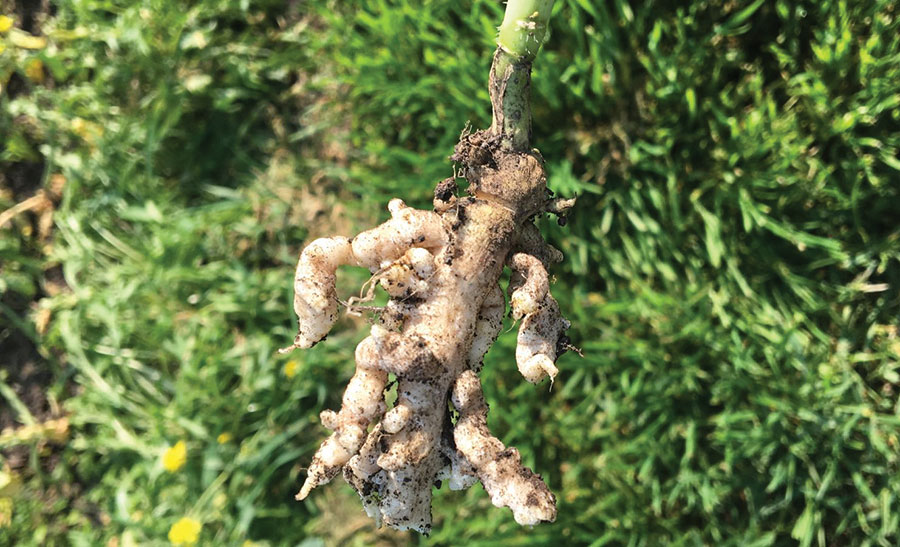Details on clubroot infection set stage for better resistance
Key result:
This is one of the first studies to characterize effector proteins with key roles in clubroot infection and disease progression. Results provide a valuable resource for the identification of new clubroot resistance genes.
Project title, principal investigator:
“Genome wide functional analysis of Plasmodiophora brassicae effectors and the management of clubroot disease” Peta Bonham-Smith, University of Saskatchewan
Funding:
SaskCanola, Saskatchewan’s Agriculture Development Fund
Full report:
To find the full report and list of peer-reviewed publications with articles on this work, go to SaskCanola’s research page at saskcanola.com/research-results and search for the project title.

The pathogen Plasmodiophora brassicae causes clubroot disease in canola and other brassicas. Successful infection relies on effector proteins that are able to suppress the host immune system as well as induce morphological changes in the plant that can increase infection rate. Although effector proteins have a high potential to play an important role in P. brassicae infection and clubroot development, and are therefore potential targets for future breeding strategies, their function and roles in clubroot pathogenicity are not well understood.
Researchers at the University of Saskatchewan initiated a five-year study in 2016 to develop a genome-wide identification and in planta expression profiling of the Plasmodiophora brassicae secretome, a set of proteins expressed and secreted by the pathogen. Other objectives were to conduct a functional analysis of P. brassicae effectors, and analysis of virulence mechanisms of P. brassicae on host plants. Effector proteins are mostly secretory proteins that enable plant infection by manipulating the host response. They may also activate defense strategies in resistant plant genotypes. Researchers also explored the genetic diversity of some of the genes that encode these small secreted effector proteins.
The model plant Arabidopsis thaliana ecotype Columbia, which is susceptible to clubroot disease, was used in this study for most of the experiments. The Brassica napus canola cultivar Westar was used to generate resting spores of P. brassicae. Canola plants were inoculated at the four-leaf stage, and at 35 days post inoculation (dpi) fresh galls were processed to collect the resting spores. For species comparisons, several Brassica species were used, including arugula, broccoli, cabbage and wild mustard.
Researchers used RNA analysis to identify genes coding small, secreted P. brassicae proteins that were up-regulated during infection of the model plant Arabidopsis thaliana at 17, 20 and 24 days dpi and from a 35 dpi canola root gall. Researchers identified and partially characterized 32 (from Arabidopsis) and 52 (from canola) P. brassicae effectors, with a more in-depth functional characterization of some effectors, identifying important roles in the P. brassicae infection process that may prove to be potential targets for future breeding strategies. Researchers were able to successfully establish the probable function and role in P. brassicae infection and disease progression for a select number of effectors. Very little variability of some of these candidate effectors was described among pathotypes.
Overall, this study is one of the first to characterize effector proteins with key roles in clubroot pathogenicity. Researchers have produced a substantial annotation of P. brassicae effector proteins and their functions. They have also identified some host targets of P. brassicae effectors that has allowed an initial characterization of the molecular and cellular mechanisms underlying P. brassicae virulence and host resistance. These effectors and their host targets characterized in this study provide a valuable resource for the identification of new R-genes that will benefit both breeders and producers of canola and other crops in Canada.





